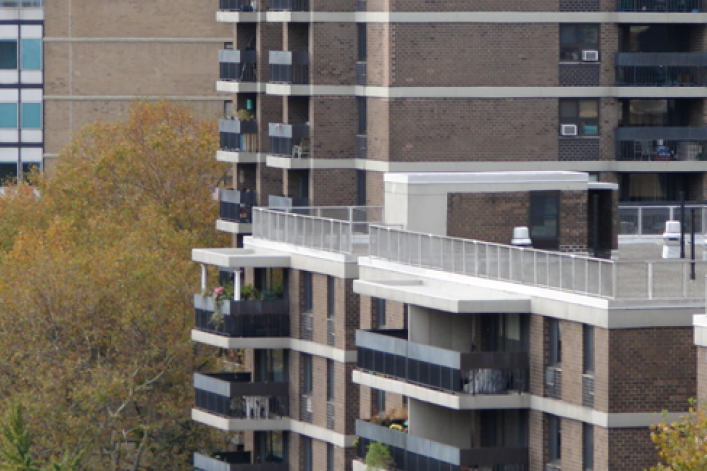What happens when affordable Mitchell-Lama buildings go market rate?

As far as building disputes go, you'd think this one would be pretty straightforward: a vote to make co-op owners' apartments nearly 100 times more valuable than their original purchase prices. After all, who'd vote no on that kind of payday?
But in Southbridge Towers, a Mitchell-Lama complex in the Financial District, things are a little more complicated. After an eight-year battle, the building's shareholders voted this week to privatize, giving up the government subsidies they currently enjoy as an affordable housing complex, and taking the building market rate. This means that residents who originally bought their apartments for $10,000 could end up selling for as much as $1 million, DNA info notes.
“I think this is going to have a tremendously positive impact on this community,” the president of the building's board told the site. “Privatization significantly increases residents' net worth, for many people who have never had this kind of financial security.”
On the other side of the debate: residents edgy about increased maintenance fees and property taxes, and the prospect of developers snapping up—and selling off—apartments in their community. Manhattan Borough President Gale Brewer told the Downtown Post, "I am hopeful that all current residents of Southbridge Towers will be able to maintain their affordable apartments. But removing over 1,600 apartments from the affordable housing pool in Manhattan will only make the borough's affordable housing crisis worse."
We spoke with co-op and condo attorney Dean Roberts of Norris, McLaughlin, and Marcus—who's representing the towers in this case—and he points out that in its original iteration, this is how the city's Mitchell-Lama affordable housing program was supposed to work. "The idea was to build middle income co-ops to stabilize struggling neighborhoods and create housing," he says. "When the buildings paid off their mortgages, they’d go out of the system." Since the city has long since stopped building new Mitchell-Lamas, he notes, "the system got patched together" to keep the existing buildings as is. As such, the city offers plenty of incentives for these buildings to stay affordable, in the form of tax breaks, discounted loans, building grants, etc.
Still, those incentives likely pale in comparison to the potential profit of selling off a downtown apartment you bought on the cheap, even if the sale does come with a heavy flip tax—money that will be designated to go back into the co-op's reserve funds. In similar buildings, Roberts tells us, "the trend is to go out of the system, and residents are usually massively in favor."
If a recent proposal to bring back Mitchell-Lama gains any traction, this could all be moot, as the city would presumably be constructing (or subsidizing the construction of) new, affordable apartments for middle-class buyers. But in the meantime, two-thirds of Southbridge Towers' residents still have to sign a form "opting in" within the next 90 days, and if they do, you may very well see a lot of new apartments hitting the market downtown.
Related:
As transient renters move in, one Tribeca photog snaps portraits of her long-time neighbors
More Mitchell-Lamas on the way? The good, the bad, and the possibly problematic
Win the NYC housing lottery: how to get an "80/20" rental
Make $95,000 a year? You could still qualify for subsidized housing
Mark your calendars: applications on their way for affordable housing in Long Island City



























